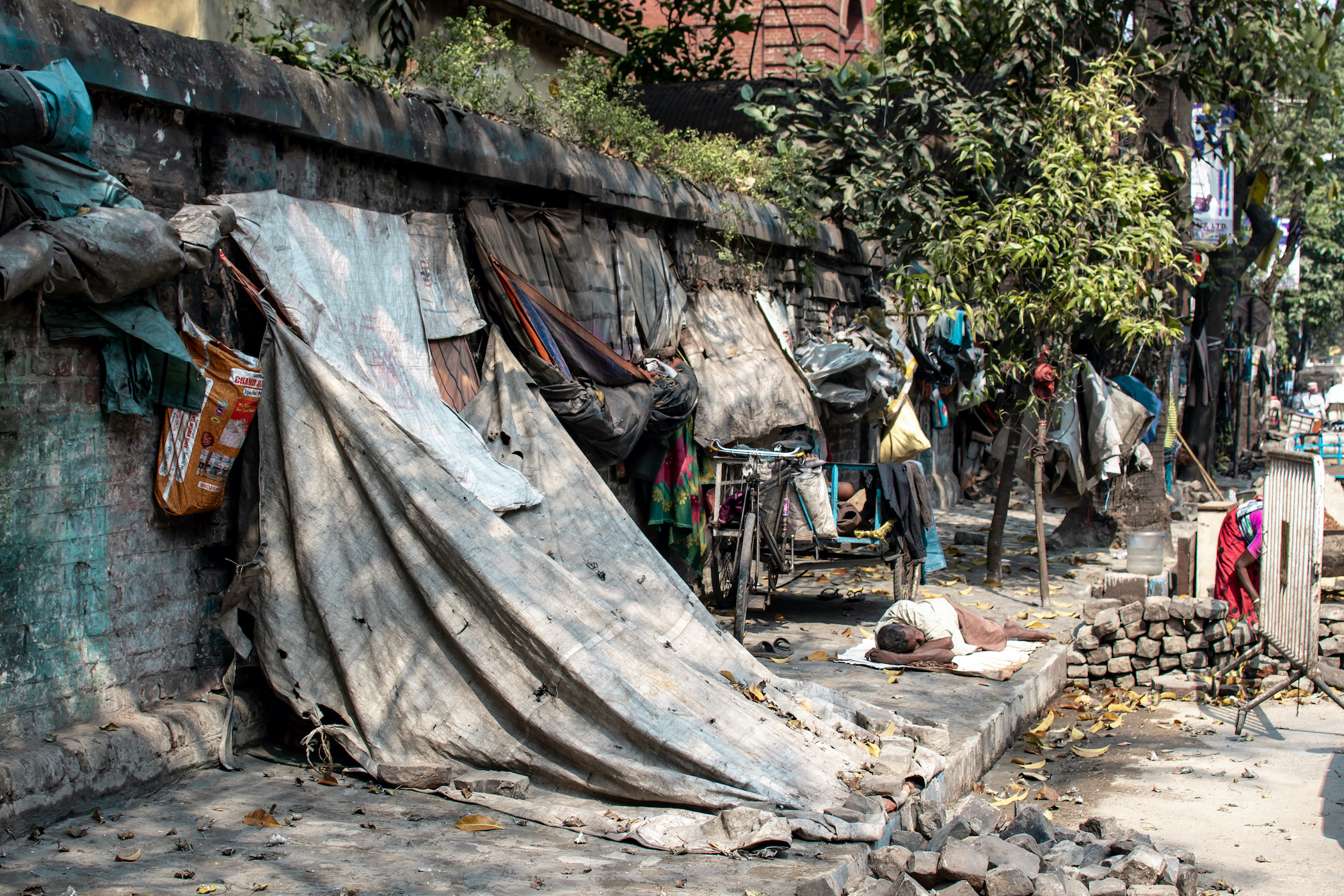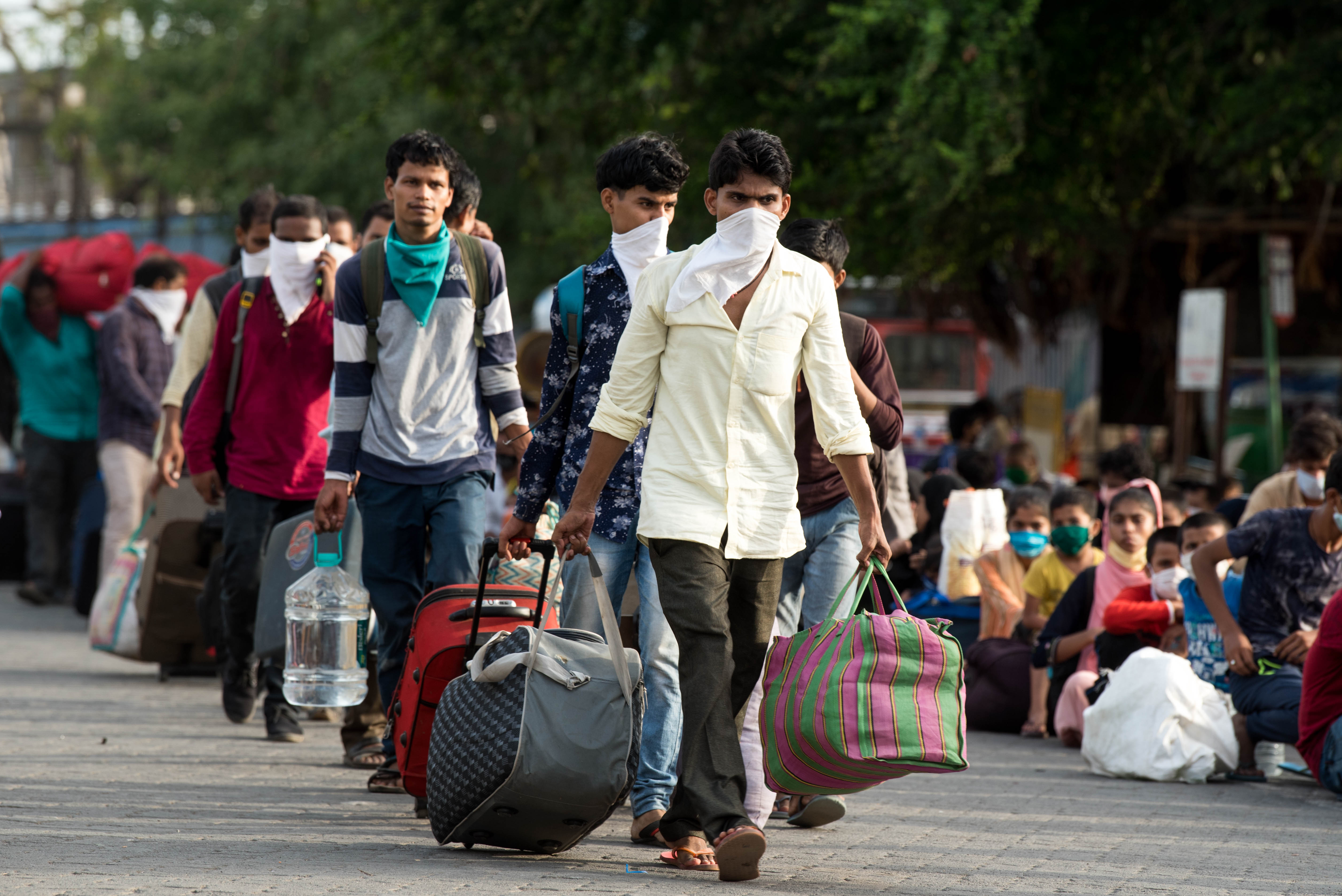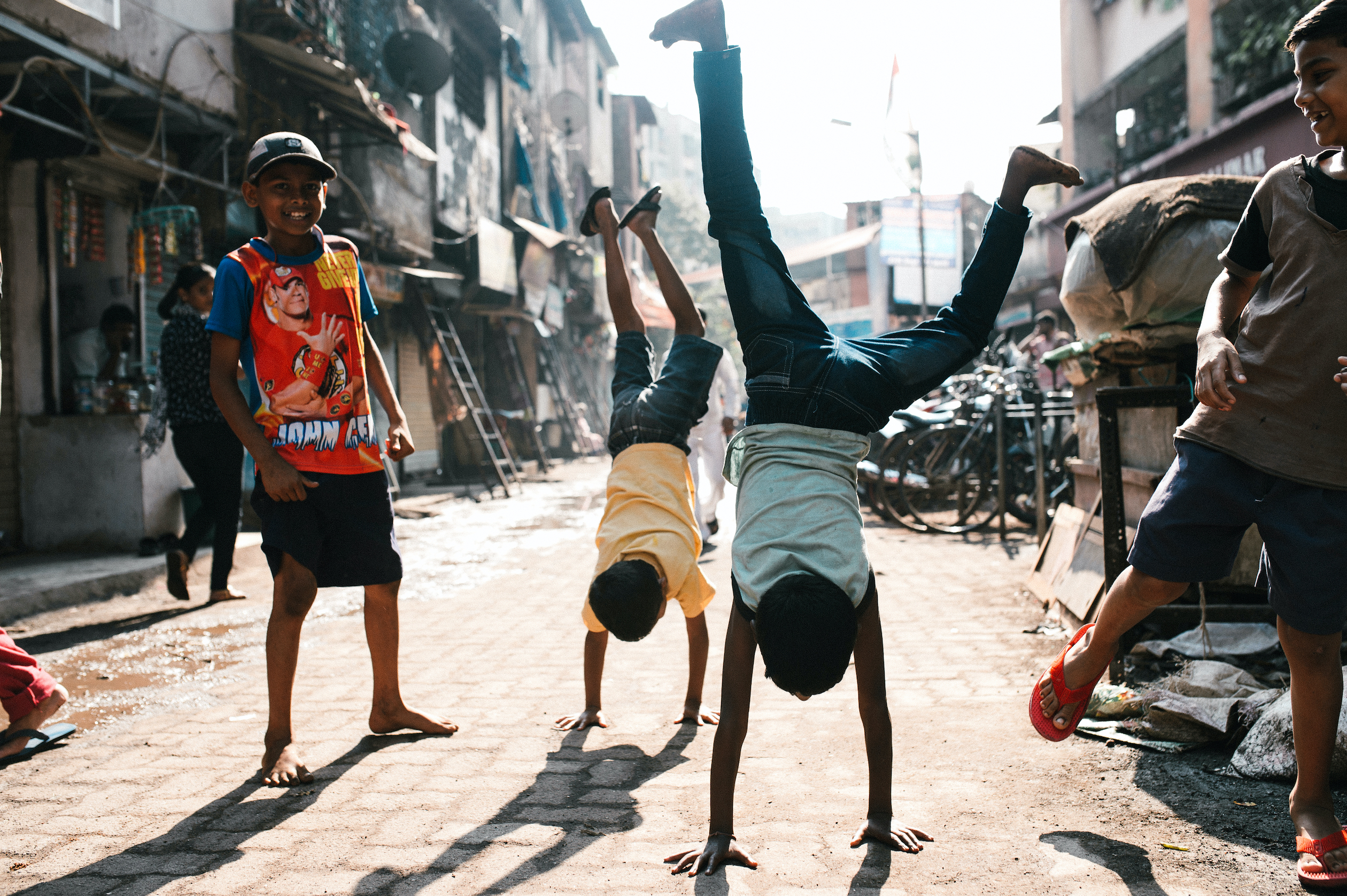We are not in this lockdown together. While some of us are discovering micro-gardening, the pleasures of sourdough baking or are doing yoga at home, others are going hungry – children are going hungry in the UK, schoolchildren, and migrant workers are risking life and limb to be able to go back to where there is food and shelter. So the city, visible but unseen, is not just localised in any one part; it’s all around us. That hunger and deprivation, that asymmetry of power is everywhere around us, and the COVID lockdown has given us some very graphic images of where that unseen city impinges on our line of sight.
The unseen poverty in our cities
Professor of English and World Literatures
- Salman Rushdie describes the denizens of the city visible but unseen ‘as faceless persons [who] stand at the windows waving piteously for help, being unable to scream.’ They have no mouths.
- What unites the slum in Mumbai, the homeless shelter in New York, the programme for torture survivors in New York and the migrant ghetto in London is the way in which we don’t think of individuals impacted by poverty as individuals.
- What we must look at again and again is tremendous resilience, capability and resistance to adversities, including mental health issues, which come with endemic poverty.
A city wilfully ignored
You know Salman Rushdie is Indian born when you stumble on the fifth, and longest, section of The Satanic Verses, which is titled “A City Visible but Unseen”. This is not an imagined city. It’s not an imaginary city, but a city which is wilfully ignored. Those of us who have grown up in India or the subcontinent are very familiar with this nervous condition: the sea-view hotel room from which you need to skim over tarpaulin-covered slums for your eyes to hit the sea, or the pretence, which is shattered every monsoon, that the domestic help who cook and clean our houses live in rundown accommodation and not slums. Every July/August, when I go home, the domestic help can’t come to roll out chapatis because their hovel has flooded and their television is sitting atop two chairs.

Photo by Arvid Norberg.
Acts of disavowal
This is what Rushdie is talking about. There are these demographics that are out there which are visible but it takes these acts of disavowal to not see. Rushdie, in this section of the novel, is talking about the migrant ghettos of London. He is talking about undocumented migrants who are, because of Thatcher’s austerity cuts, unable to afford any kind of public sector housing, let alone private housing, and who live in the Shaandaar Café, which is a very important locus of the of the action for this part of the book. They live in the Shaandaar Café, £10 a night per person, and later on, when the Shaandaar Café goes up in flames, Rushdie describes these denizens of the city visible but unseen ‘as faceless persons [who] stand at the windows waving piteously for help, being unable to scream.’ They have no mouths. This part of the book is both richly socially realistic, but also uses dollops of magic realism.
Chapatis on train tracks
The city visible but unseen has been made very poignantly real for us. When I say “us”, I think about people like me who have feet in two locations: India and the UK. Around the time of the first lockdown, when the lockdown was announced in India, you suddenly saw long lines of migrant workers trying to return to their homes. They were not provided with accommodation once the gig economy packed up, nor were they provided emergency transport. They were literally walking hundreds of kilometres to go back to their villages from the cities they had migrated to for work. One day, middle class India woke up to the image of chapatis lying on train tracks. They were from these workers who, exhausted from walking inhuman distances, had actually fallen asleep on what they thought were disused train tracks; those people were run over by a goods train. What remained were the dehydrated breads that they had packed for this long odyssey home. It takes these sensational images for us to wake up to the reality that the lockdown is not impacting everyone equally.

Migrant workers sit in queues at a railway terminus for boarding a special train back home during a nationwide lockdown. Photo by Manoej Paateel.
Individuals versus the collective
What unites the slum in Mumbai, the homeless shelter in New York, the programme for torture survivors in New York and the migrant ghetto in London is the way in which we don’t think of individuals impacted by poverty as individuals. We think of them as the huddled masses. We think of them as a collective; they are under the mark of the plural. Albert Memmi said of the colonised that you cannot think of them as individuals. One of the things that interested me is: how then do we reach out to the psychic maladies of these groups if we can’t even think of them as having selves? Because most psychoanalytic paradigms are about the individual. They are about the sovereign self.
I wrote an article called “Slums and the Postcolonial Uncanny”; the slums inhabit this uncanny space in cities, to go back again to this idea of visible but unseen. “Slum” is not a word that came out of India; it’s a word that came out of Victorian London and Victorian cant speech. Liza Weinstein makes the point that the porosities of the word “slum” are very much a part of the economy and governance, but they also seem to be outside of it and make it very difficult for us to imagine the slum as the beating heart of the city.
Our relationship to slums
I have found it very useful to use the Freudian concept of the uncanny, but it’s strange, this identity of home and the unhomely, the domestic and the alien, to think about our relationship to slums. What really interested me in the way in which we think about slums is how we always think of it as a collective. We do not think about individuals living in slums. We think about groups; we think about festering piles of rubbish. If you can only bring to mind National Geographic photographs of Dharavi, which is one of the biggest slums in Asia, probably the second biggest slum, they’re from a bird’s eye view, which is trying, through that overview, to make sense of what is not cohesive, of what is, in fact, chaotic and unmanageable. That unmanageable, chaotic, non-cohesive life is given some kind of a representation in that bird’s eye view of Dharavi, and the slum is not only represented truthfully but is actually actively misunderstood in the process.
Poverty porn or not?
The anxiety about slums takes very phobic configurations when it comes to representing slum dwellers. You’ll remember Danny Boyle’s 2008 Slumdog Millionaire. It was very popular, but critics in India slammed it as poverty porn. Mira Nair is a very acclaimed Indian filmmaker whose own Salaam Bombay! won several prizes at Cannes and had an Oscar nomination. She said that she would never have worked with street kids and called them slumdogs. This is a very odd word to use. Nobody in India had ever heard of it. In fact, nobody who had access to an OED knew what that word meant. It has, in a way, gained popularity after this movie. There is a character in the movie who offers the nearest Hindi translation, which is kutta, which means dog. So the feral dogs, the half-naked street children, the pimps, the gangsters, the crooks: this is the sort of collective that is represented by “slumdog”.

Photo by knyazevfoto.
User-generated city
When you think about it, what exactly is there to be so phobic about with slums? Urban studies scholars, such as Matias Echanove and Rahul Srivastava, have pointed out that a slum like Dharavi is actually a user-generated city: its different parts built and rebuilt over generations. They also point out that when Slumdog Millionaire came out there were protests in the slums about the word slumdog. What quite a few people were protesting against was not the word dog, but the word slum, because this was their home, their habitat. What I’m trying to do in my book is restore that sense of home in what has been, through neoliberal governments and the asymmetries of wealth and power in colonial infrastructures, forcibly made unhomely and animal. I’m trying to restore the human to the human, and it is already human in the case studies that I see. What I look at again and again is tremendous resilience, capability and resistance to adversities, including mental health issues, which come with endemic poverty.
Discover more about
the unseen population
Mukherjee, A. (2018). Migrant Britain. In R. Eaglestone, (Ed.), Brexit and Literature (pp. 73–81). Routledge.
Mukherjee, A. (2018). Slums and the Postcolonial Uncanny. In E. Boehmer & D. Davies (Eds.), Planned Violence (pp. 87–104). Palgrave Macmillan, Cham.